One of the best features of a native plant garden is seeing snow perched delicately on waving stalks of prairie grasses and their intricate seedheads during the depths of winter. Grasses are some of the best natives to provide that sought-after “winter interest” thanks to their golden colors while in dormancy and the way they maintain their shape through the winter.
But these plants also provide much more than just aesthetics — native grasses are important components of winter habitat, particularly for small mammals. Along with native forbs and shrubs, they create a diverse, thriving ecosystem that helps birds and mammals survive the winter in cold climates. If you’re looking at your landscape in the winter drabness and want to have more habitat by this time next year, read on to find out how grasses can contribute.
A word of caution: Many of the mammals supported by native grasses, such as mice, voles and raccoons, are considered pests in certain settings. Keep this in mind as you site your garden, and think about how close habitat areas are to buildings like your house or garage. As Cindi Jablonski, Wildlife Ecologist with the McHenry County Conservation District in northern Illinois explains, “Learning how to attract wildlife and learning how to live with them are two very different but equally important things.”
How do native grasses provide winter habitat?
The most important function of native grasses in winter is providing a subnivean environment, which is an insulated shelter beneath the snow. When snow builds up around prairie grasses, some of it melts at ground level while more snow accumulates and freezes above it. This creates a space close to the ground that can maintain consistent warmth even as the air above the snow stays very cold. Mammals survive in these spaces and create tunnels between the openings, helping them to avoid predators and stay warm.
Smaller groupings of grasses and/or shorter grass species will create this shelter for small mammals like mice, voles and shrews, while larger groupings or taller grasses will create a bigger subnivean shelter for larger mammals such as rabbits or foxes. In larger-scale prairie restorations, Jablonski notes, “the thatch of dead grass leaves becomes an important habitat for native ground-nesting bird species like bobolinks, grasshopper sparrows and meadowlarks.”
The seeds from native grasses may be eaten by birds, but forbs are a much more reliable food source when it comes to seeds. But, grasses provide food in other ways. Planting native grasses and forbs instead of a turfgrass lawn supports more invertebrates in the soil, and these subterranean creatures are food for small burrowing mammals. Some rodents, such as voles, will feed on the roots of grasses as well.
This underscores the importance of growing many native plants together to ensure your garden has protection, food sources and healthy soils, all of which create a thriving habitat even in the dead of winter.

Which grasses (and sedges) are right for winter habitats?
There are numerous options for grasses native to cold climates like Zones 3, 4 and 5. And we can’t overlook sedges — these grass-like plants are in a different family (Cyperacaea) than grasses and are often found in wetlands and woodlands, but they provide many of the same ecosystem functions as grasses.
The specific choice of plants really depends on the desired aesthetic in your garden. If you want a naturalistic look or are restoring a large prairie site, taller sod-forming grasses like big bluestem (Andropogon gerardii), switchgrass (Panicum virgatum) and indian grass (Sorghastrum nutans) can act as the scaffolding or the bones of the prairie or garden area. Subnivean environments will form around the grasses, and forbs interspersed throughout them will provide copious seeds for animals throughout the winter.
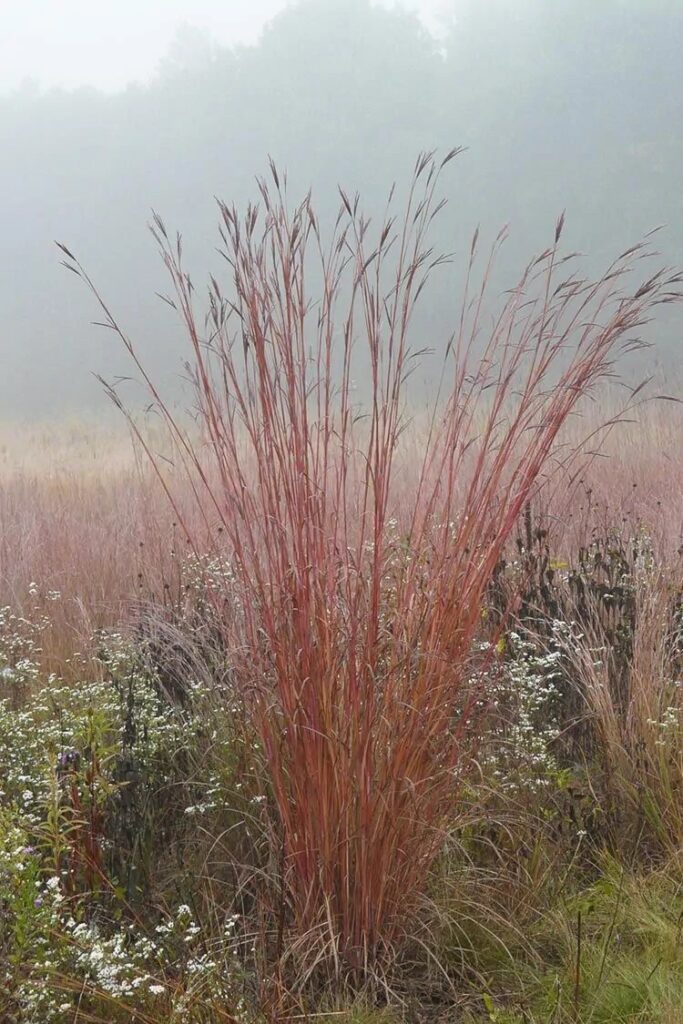
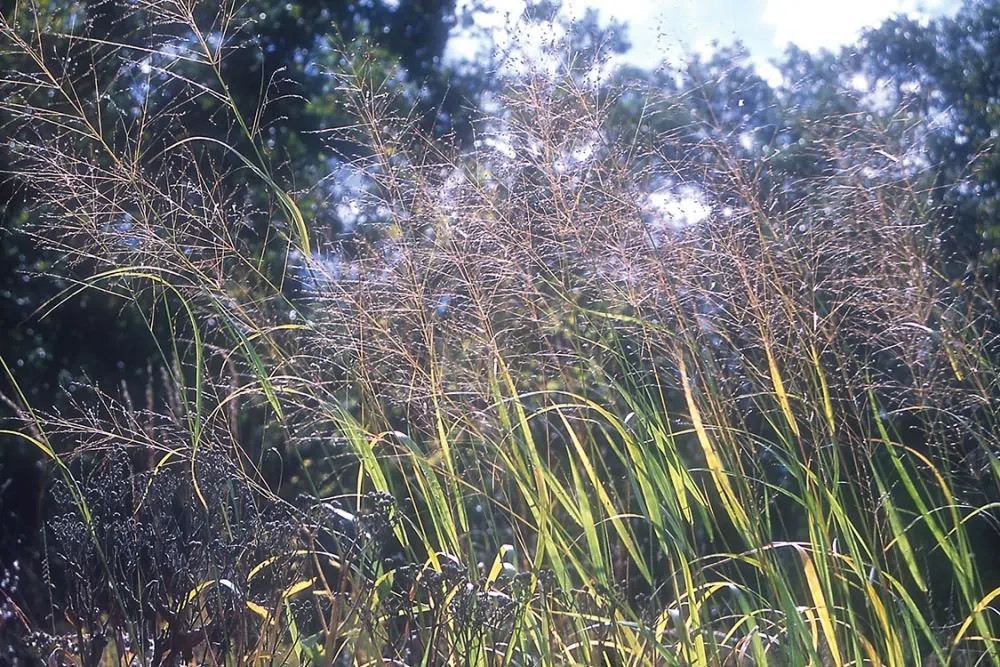
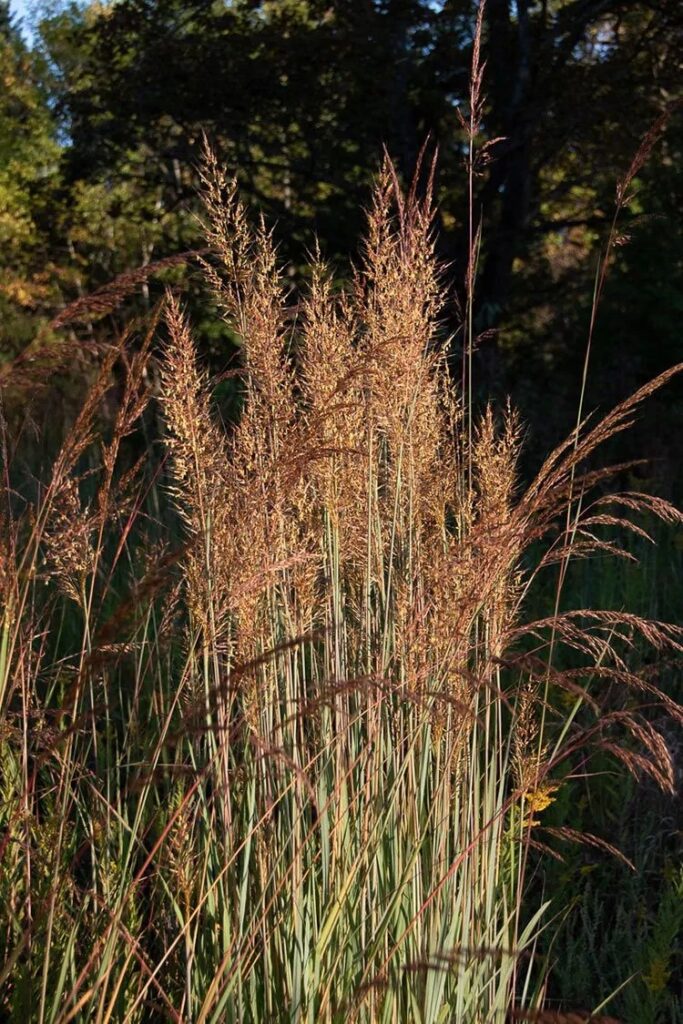
If you’re gardening in a smaller space, bunch grasses such as prairie dropseed (Sporobolus heterolepis) and little bluestem (Schizachyrium scoparium) are a better choice because they won’t flop over sidewalks or paths, but they’ll still create habitat spaces.
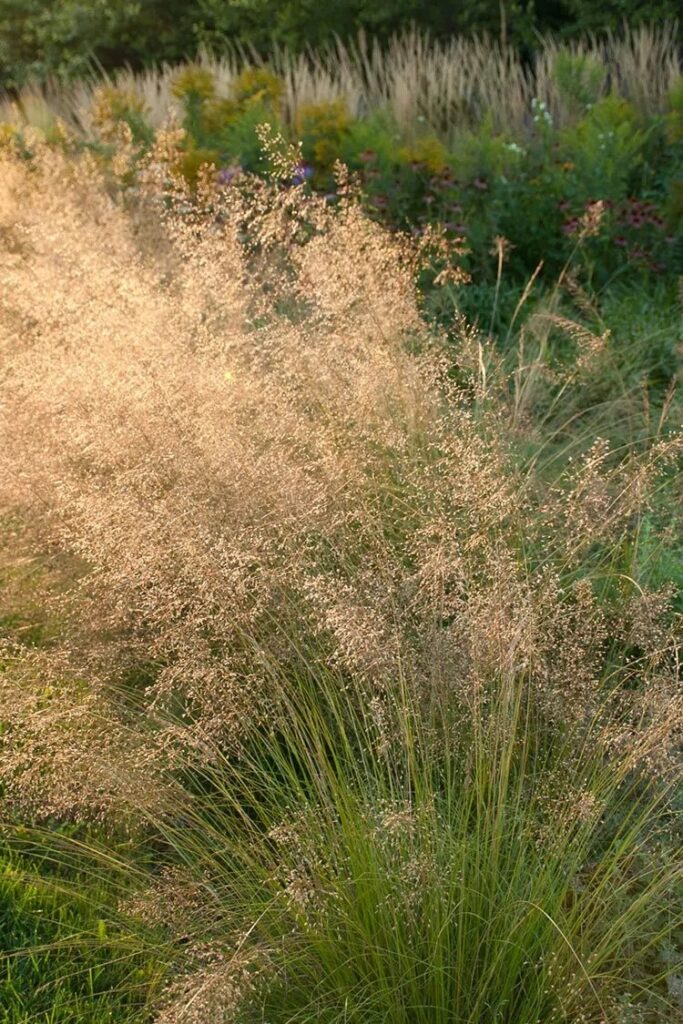
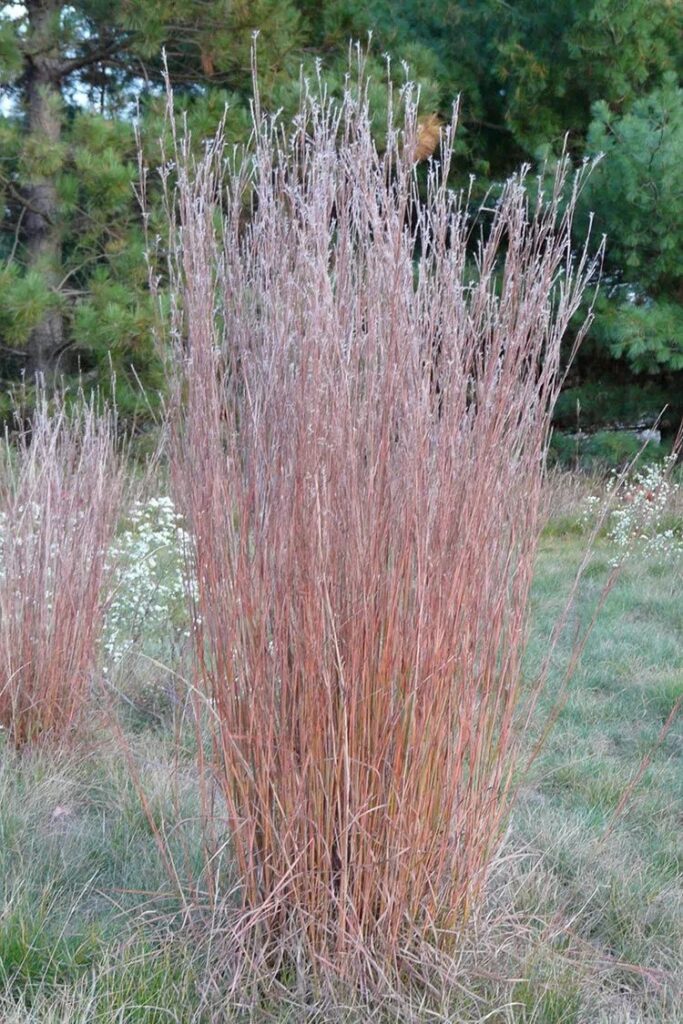
“All of these grasses will grow together in a wide variety of soils, from sandy loam to clay loam,” Jablonski says. “But if you plant them together, over time the sod-forming species will likely increase and the bunch grasses decrease” because the sod-forming ones are more aggressive.
When it comes to sedges, the genus Carex offers an enormous variety of choices. Lawn replacement species like Pennsylvania sedge (C. pensylvanica) are small, low-growing species, while others like muskingum sedge (C. muskingumensis) have spiky, canelike stems (called “culms”) that provide a more unique, accent-type aesthetic in the garden. Bicknell’s sedge (C. bicknellii) is another very adaptable sedge for medium or medium-wet soils. It grows well with prairie dropseed and many types of prairie forbs.
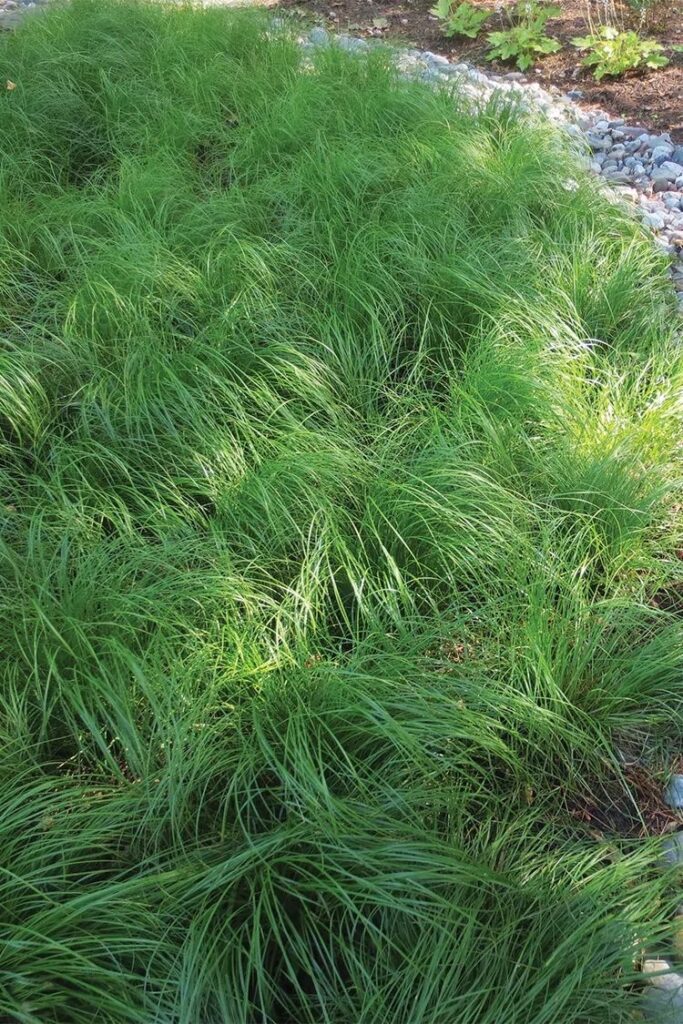
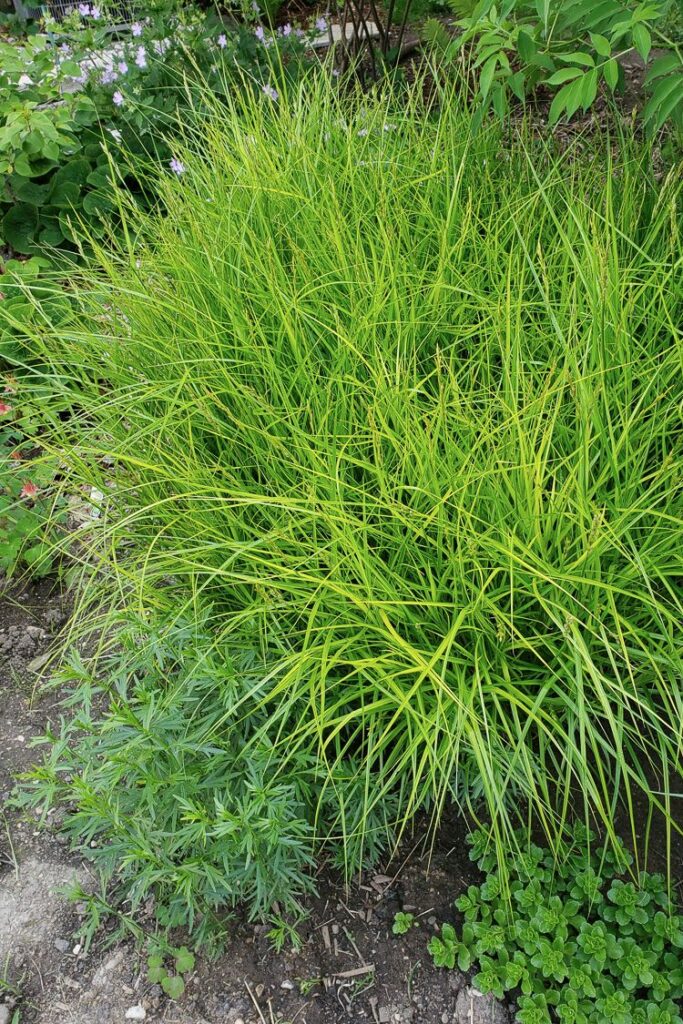
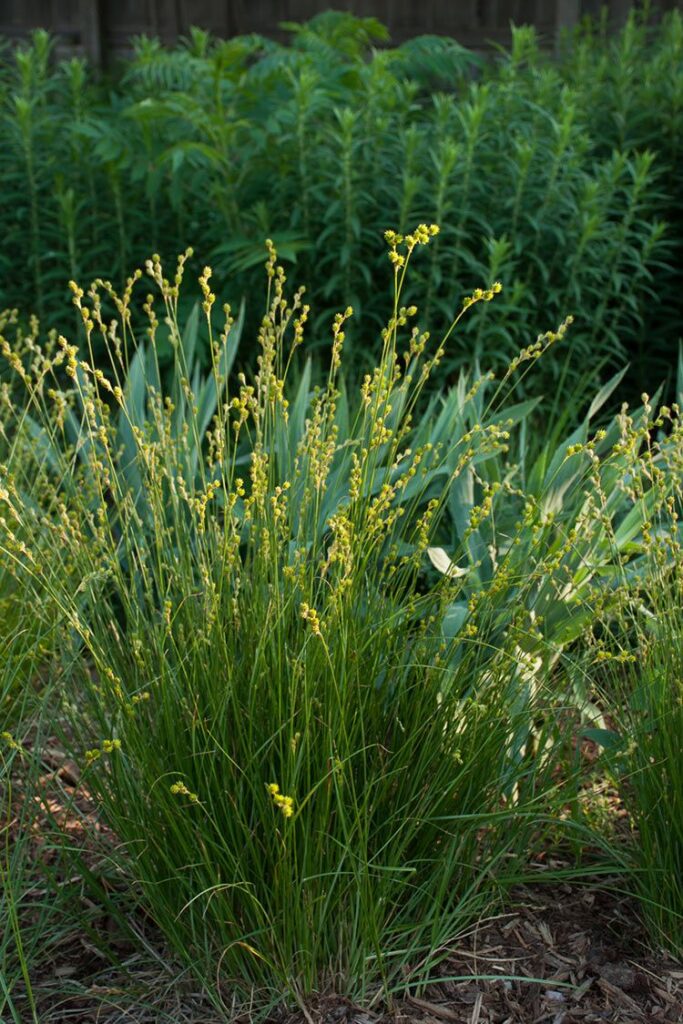
Whichever species you choose, you will help create a more robust habitat for mammals seeking shelter during the winter, and these native grasses along with forbs and shrubs will support a healthy ecosystem all year round. That means benefits for insects and birds as well as mammals.
Not only will native grasses look lovely in winter, but the health and activity in your garden will make the winter season anything but dull in your landscape.
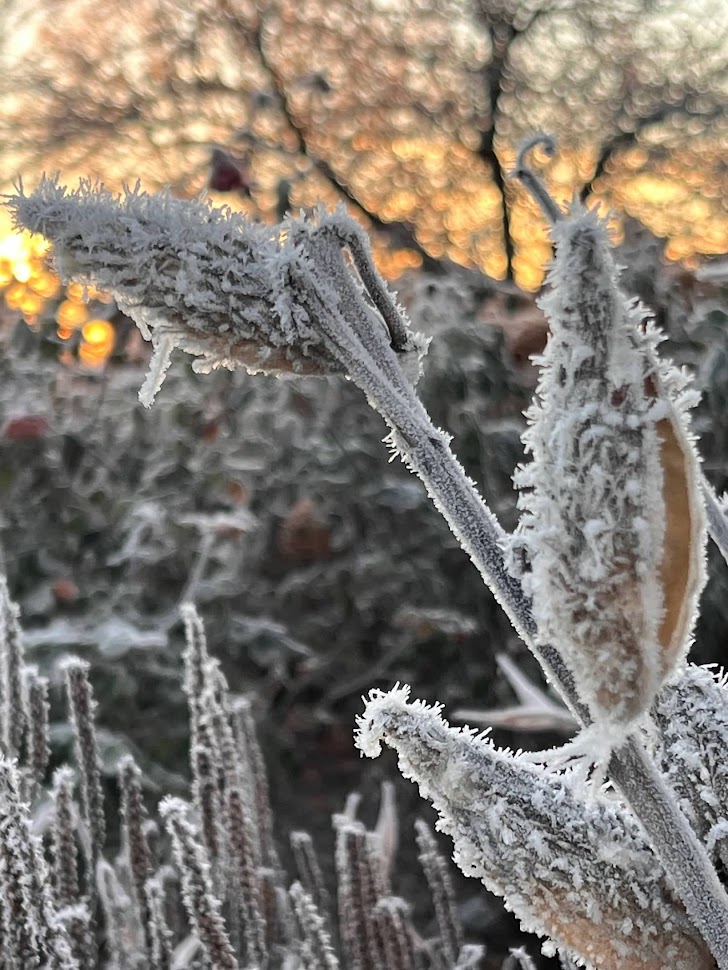

Additional Sources:
Neil Diboll and Hilary Cox, The Gardener’s Guide to Prairie Plants, University of Chicago Press, 2023.
Andrew L. Hipp, Field Guide to Wisconsin Sedges, University of Wisconsin Press, 2008.

